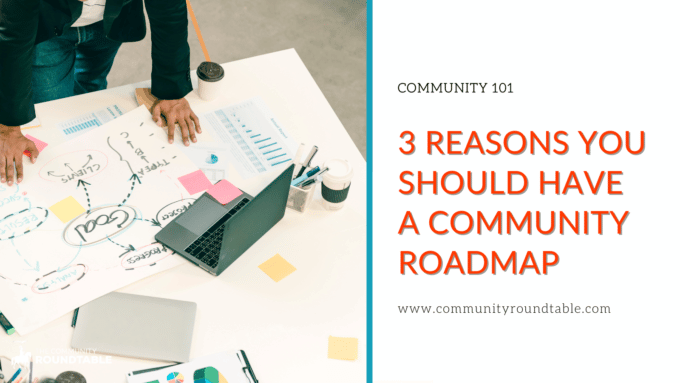
A community roadmap gives direction to your community program. Your community strategy describes your destination. The roadmap helps steer you there.
Roadmaps often look like project plans, detailing specific activities and the resources required. Roadmaps mark milestones in a community’s journey, making tracking progress easier. Roadmaps are common in product and technology lifecycle planning and can be a useful tool when communicating plans for the future of your community program with your team and executives.
Here are three reasons you should have a community roadmap if you don’t already!
Align tactical and strategic priorities.
A roadmap highlights your community’s objectives and how you will achieve them. When you have a roadmap, your conversations with stakeholders become more productive. Instead of talking about “why we should invest in community,” you can discuss where to target your investments.
A community roadmap translates your strategy into an action plan. Map community activities and initiatives to the key objectives they will address. This exercise will help you uncover what is important and what is not:
- If you don’t have any activities linked to an objective, spend time planning what you need to do to meet that objective and add to or edit your roadmap.
- If you are planning activities that don’t meet any community objectives, consider whether these activities are worth the resources you spend on them.
Communicate value.
A roadmap shows which activities are important to invest in to grow your community. As a communication tool, it documents community decision-making.
If you’ve articulated the value your community brings to your business in your community strategy, you can map specific activities and plans in your roadmap back to those objectives and their value to the business.
Your roadmap can serve as a communication tool in various scenarios:
- Planning discussions: When building your roadmap, highlight the objectives of each activity.
- Community performance discussions: Link activities to metrics in your community scorecard/dashboard.
- Staff performance evaluations: Incorporate specific business outcomes in the performance evaluations of team members based on the activities they manage in the community roadmap.
Organize planning
Roadmaps translate strategy into action because they itemize the resources needed for effective outcomes. Connecting resources to how they will advance the community strategy makes it easier to measure value.
Your community roadmap translates your community strategy to action, outlining the activities required to help your community achieve value for the business.
Having an organized work plan helps you decide what resources you need and when. Areas to consider include:
- Internal staff time
- External consultant fees
- Budget for external resources like training
- Budget for community events and promotions
Not sure where to start?
You can download our free Building a Community Roadmap ebook. In it we explore the elements of a productive community (aligned to the eight competencies of the Community Maturity Model) and share tips and worksheets for getting started. (Jump to page 17 to dive right in!)
Download the eBook now. (ebook will open in a new window)
.
